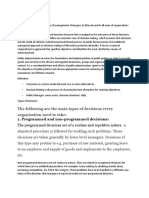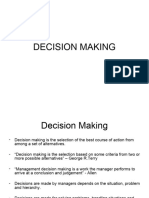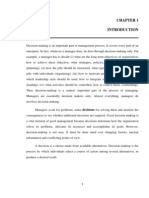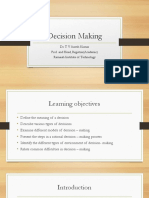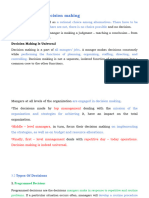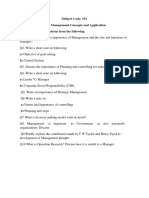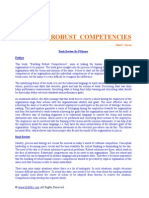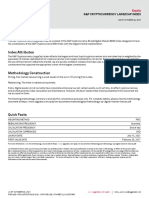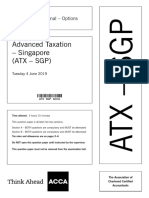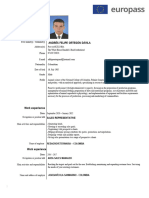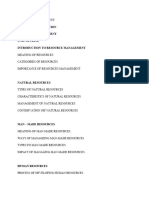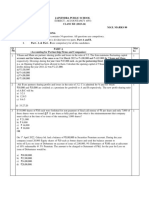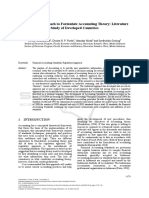0% found this document useful (0 votes)
43 views24 pagesTypes of Data Processing
The document discusses different types of decisions managers may face including programmed vs non-programmed, operational vs strategic, organizational vs personal, and individual vs group decisions. It also outlines the eight step decision making process that managers can follow, which includes identifying the problem, criteria, alternatives, analysis, selection, implementation, and evaluation.
Uploaded by
aaaCopyright
© © All Rights Reserved
We take content rights seriously. If you suspect this is your content, claim it here.
Available Formats
Download as PPTX, PDF, TXT or read online on Scribd
0% found this document useful (0 votes)
43 views24 pagesTypes of Data Processing
The document discusses different types of decisions managers may face including programmed vs non-programmed, operational vs strategic, organizational vs personal, and individual vs group decisions. It also outlines the eight step decision making process that managers can follow, which includes identifying the problem, criteria, alternatives, analysis, selection, implementation, and evaluation.
Uploaded by
aaaCopyright
© © All Rights Reserved
We take content rights seriously. If you suspect this is your content, claim it here.
Available Formats
Download as PPTX, PDF, TXT or read online on Scribd
/ 24




















